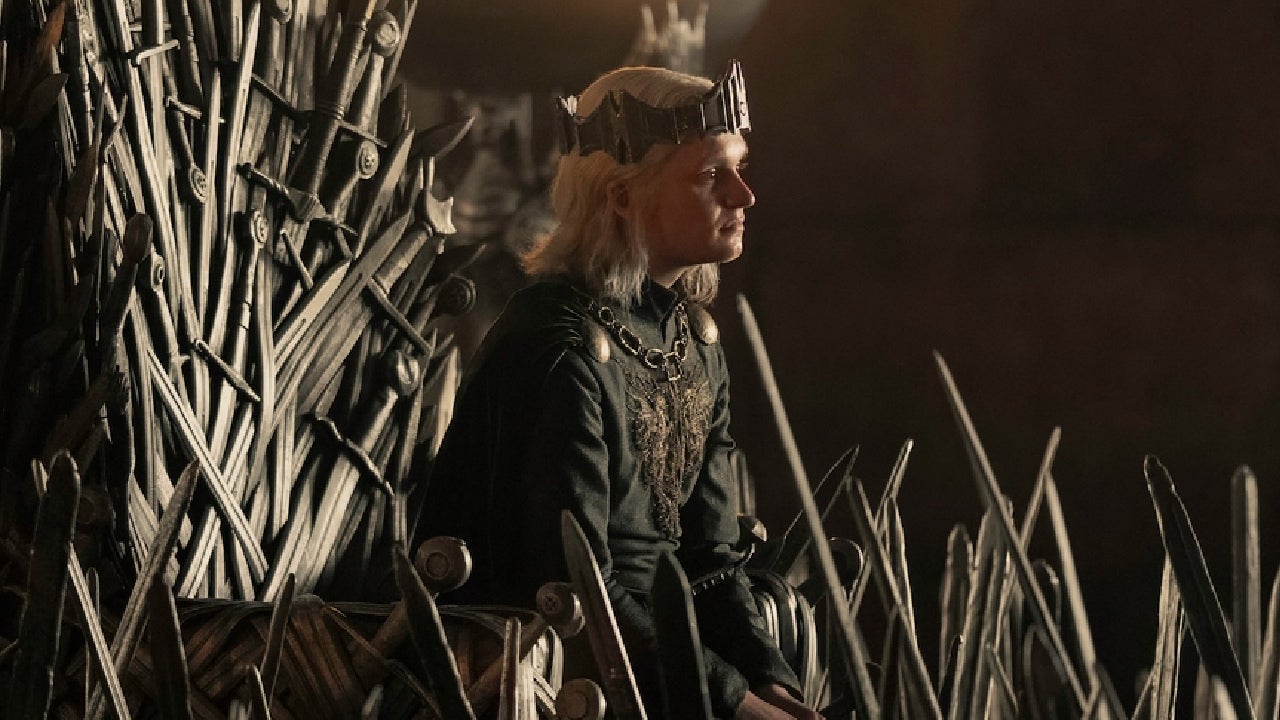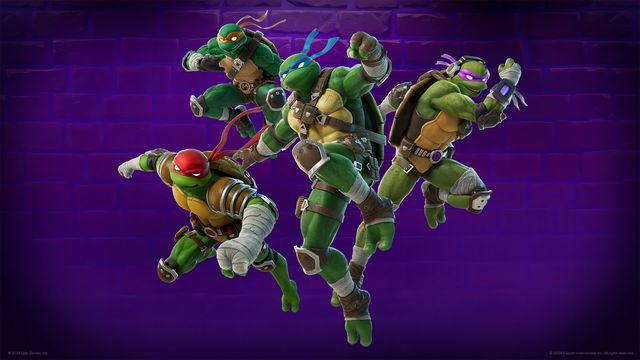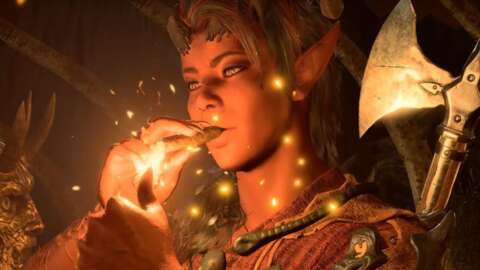If at first you don’t succeed, try, try again. While the original Lords of the Fallen from 2014 was one of the earliest to bravely take a stab at recreating FromSoftware’s lightning in a bottle, it didn’t quite hit that high mark. Nearly a decade and about a million soulslike copycats later, there’s perhaps no better time for its follow-up to take a second swipe – and thankfully, this new, confusingly identically named Lords of the Fallen confidently lands its strike. Its world, divided into dual realities, is absolutely awesome to explore, buildcrafting is diverse and complex, and combat is so smooth and satisfying that I’m willing to forgive all the ways it cribs from its contemporaries. Some pretty severe performance issues and bugs as well as disappointingly easy boss fights mean this latest thrust isn’t quite a fatal blow, but even so, I expect to spend many more hours impaling enemies and exploring every nook and cranny of its cleverly split world for secrets.
Lords of the Fallen is yet another entry in the action-RPG soulslike craze, complete with an unsettling fantasy setting, other players invading your game for some co-op or PvP goodness, and, of course, lots of dying. It makes use of the same sort of deadly third-person combat system full of dodge rolling, posture meters, and emoting over fallen enemies as a sign of utmost disrespect. A lot is borrowed from FromSoft classics (in this case, Dark Souls specifically), but there’s also quite a bit of unique stuff to get excited about, too. That includes things like some super cool dual-reality shenanigans, or a nifty magical lamp that lets you flay the souls right out of your enemies.
And look, I know every time I review another one of these things, I always gripe about how absolutely flooded with new entries this genre is, but it really does bear repeating. There are a lot of these games nowadays. While more of a genre I enjoy isn’t necessarily a bad thing, it has become a tad disheartening to crack open a brand new game and feel like I already know exactly how 90% of it’s going to go because everyone’s using the same bag of tricks and tropes. It’s very weird, for example, that I can see a pile of boxes in the distance and think, “Ah, can’t wait for a monster to leap out from behind those and attack me,” or reach a swamp area and know, without question, that I’m going to be jumped by creatures who try to poison me. At this point I’ve started to lose track of which game’s healing items are called Estus Flasks vs. Dragon Hearts vs. Flasks of Crimson Tears vs. Pulse Cells vs. Healing Gourds and so on to eternity. If those names all ring a bell, expect plenty more deja vu here.
If “Lords of the Fallen” sounds familiar to you as well, that’s because it shares its name with the 2014 game from developer Deck13 – but as the lack of a “2” or something similar might suggest, this Lords of the Fallen isn’t a sequel so much as a full on reboot. Those who played the original will definitely hear NPCs talk about some familiar (and sometimes nonsensical) setting terms like “The Rhogar” and “Adyr,” or see really cool and recognizable sights like the giant outstretched hand of a fallen god in the distance, but new developer Hexworks only used the most basic elements from the previous version. The good news is that this fresh story it’s telling using some refurbished, dusty bits is much better than its predecessor, and the world feels much more fleshed out. There’s some interesting characters here and there and some cool lore and worldbuilding to enjoy as you meet various factions that you can side with or work against, even if that stuff sometimes feels buried under a mountain of generic dark fantasy gobbledegook (like the super original concept of using “Charred Fingers” when invading other players’ world).
Though Lords of the Fallen certainly borrows a lot from its genre peers, its biggest original idea is also its best: the dual realms you can swap between at any time. Axiom, the physical world most people perceive, lies atop a ghostly world of dark abominations and creepy eyeballs called Umbral which you can access using a magic lantern. As you run around killing bosses and kicking scrubs off of ledges, you’ll need to navigate both, which adds a really novel new way to explore the environment. For example, you might encounter a broken bridge in the normal world, but by diving into Umbral you’ll be able to cross it using an organic, gray platform only visible and tangible by entering the spooky world of darkness – it sorta reminds me of the eerie plane Frodo enters when he puts on the One Ring, except a lot more useful and less out of focus. This mechanic has an enormous impact on nearly every aspect of Lords of the Fallen, from combat where normally imperceivable enemies become a major threat when you enter Umbral, to exploration since each area essentially has two versions, warranting multiple runs through the same section to see what you missed.
Even cooler is the fact that you can interact with the Umbral plane without entering it, by holding your trusty lamp to see a small piece of it come into view around you. Doing so allows you to do things like pass through physical barriers that don’t exist in the other world and get a sneak preview of stuff that might lie hidden on the other side before switching over fully. This makes exploration less about running from point A to point B and more about taking your time to understand each area and look for secrets as you swap between realities and use your lamp to shed light on how they differ. It’s also pretty awesome that if you ever get slain by the enemy, instead of dying, you’ll be involuntarily pulled into Umbral, giving you one last chance at life. To escape back to the real world, you have to find totems hidden throughout this shadowy one or return to a checkpoint to rest, but more and more powerful enemies begin to infinitely spawn and hunt you down the longer you stick around.
It’s a shame, though, that Lords of the Fallen doesn’t quite seem capable of supporting its cross-dimensional ambitions from a technical standpoint, as it suffers some pretty serious performance issues in the attempt. Even with my GeForce RTX 4090 GPU and Ryzen 9 7950X3D CPU, I encountered stuttering and dropped frames on a fairly regular basis, especially after prolonged sessions. Sometimes these issues were so consistent I felt serious eye strain and had to reboot my PC in hopes things would improve at least for a little while, and the problems were shared in some form or another by everyone I played with. It’s especially frustrating when lost frames lead to me taking hits I otherwise may have avoided, or when my co-op partners got killed after their game turned into a slideshow during multiplayer (where performance is sometimes even worse). I’m not usually one to whinge about performance benchmarks or less-than-perfect framerates, but these were so consistent and impossible to ignore that it was like eating a delicious meal with a severe toothache and a cut on the roof of my mouth. I hope this sort of stuff will be patched out before too long, but for now, those severe problems are impossible to ignore.
Thankfully these areas are still a ton of fun to explore when Lords the Fallen’s framerate manages to behave, from the fiery ashes of the city of Calrath to the treacherous steps of a monastery in the mountains. Level design is some of the best of the genre in recent memory, with interesting (and often breathtaking) environments, tons of secrets to discover, and loads of unique enemies to fight, introduced one at a time via miniboss fights throughout the roughly 40-hour campaign. Lords of the Fallen also draws clear inspiration from the first Dark Souls specifically, in that it tries very hard to connect every area of the map to a central hub, and has lots of opportunities to unlock shortcuts and backtracking paths – though it does so at the cost of being annoyed by about 15 doors that can’t be opened from the side you’re on every hour or so.
Taking down armies of wretched skeletal abominations is a lively whirlwind of blades and flails being swung and parried, making it play more smoothly than the vast majority of its peers, even if that dance feels extremely conventional at this point. You can be a brawny bruiser wielding the ol’ reliable sword and board, a quick and precise Bloodborne dude, or a variety of ranged magic users with cool but by-the-numbers abilities like covering levels in fire and lava or blessing you and your allies with health regenerating effects. Upgrading weapons, spells, and slotting runes and other upgrades into your equipment to give them special modifiers helps extend that buildcrafting variety even further. With nine starting character classes to choose from (and four more that can be unlocked later) there’s tons of room for replayability and a variety of interesting playstyles, which is one of my favorite aspects of any action-RPG.
It’s also great that many of the areas you’ll fight your way though are legitimately challenging, often filled with elite enemies who swarm you with devastating attacks in claustrophobic environments that have numerous ways to get yourself killed. Getting pulled into the Umbral realm piles on even more enemies and danger too, which is a fun, sweat-inducing time. Really the only issue is that enemies are as dumb as a bag of hair, which isn’t exactly a unique problem in the genre, but it’s always amusing to see these morons try to figure out how to navigate the world’s geometry only to stand in place as you repeatedly hit them with balls of lightning.
Not content with just being awesome for exploration, your magical lamp and its relationship to the parallel Umbral realm is also quite useful in combat, primarily because you can use its Soul Flay ability to rip out an enemy’s soul, stopping them in their tracks and providing ample time to dish out damage. If you’re feeling more rude, you can even toss their soul over a cliff, so when their body finally catches up they fall to their death – extremely useful for disposing of troublesome baddies foolish enough to engage you near a cliff’s edge. Also, some enemies will have supernatural protection that makes them nigh invincible, the only remedy being using your lamp to cast light on a nearby hidden eyeball to strip them of that protection. Finding ways to play with the dual-reality swapping during combat really drives home just how dope that mechanic is.
Another neat new idea is Vestige Seeds, which can be planted in various designated locations throughout the world to manifest semi-permanent checkpoints at intervals of your choosing. So if you’re having trouble with a certain section and don’t want to deal with the pressure of dying before you reach the next static checkpoint, you can use a Vestige Seed to create a safe haven along the way and take baby steps to your final destination. This adds a really nice minigame where you’re deciding when to stop and spend a seed, and when to push your luck and see if you can make it through the next few rooms before saving your progress.
And obviously no soulslike would be complete without epic boss fights against disgusting monstrosities, and Lords of the Fallen has some cool ones, such as a a giant crow who tries to bury you in ice or a dragon-riding abomination who shows up to hunt you down throughout your adventure. Unfortunately, unlike the levels preceding them, they’re not very challenging at all. Every boss comes at you with slow and telegraphed moves, surprisingly reasonable health bars, and plenty of breaks in the action to heal up thanks to the simple AI, making death a pretty rare occurrence against them. Many of these fights only really serve to introduce a new elite enemy that will be used more regularly later on, too, making them pretty unremarkable. It’s still entertaining to take on enormous beasts despite them being pushovers, but even some of the more unique fights seem subpar compared to the bar set by recent soulslikes.
There’s also just a pretty sizable layer of jank around this otherwise awesome package. I saw a few game crashes, had cool combat encounters ruined when enemies got stuck helplessly in the environment, was locked out of certain button commands like blocking for stretches of time, and more. Plus, there’s some weird non-bug wonkiness, like how resting at a checkpoint triggers a loading screen every single time – sometimes Lords of the Fallen has original Dark Souls energy in a pretty unflattering way.
Playing with a friend can make some of those rough edges even more noticeable, since it introduces other questionable quirks, like how co-op partners are tethered to the host and get teleported if they stray too far, which is accompanied by a loading screen. But these loading screens often take just long enough for the host to have traveled out of sight again by the time you load back in… leading to yet another loading screen. You also can’t tell where the host is due to a bizarre lack of any kind of in-world indicator pointing you in your friend’s direction, making it easy to lose sight of them and become separated.
That said, playing with a friend is still a good time, and provides the assisting player with plenty of resources and items along the way – and without kicking them back to their own world after every boss fight, as FromSoft games often do. What I’ve played of New Game+ so far also has me and my squad quite excited to go back through some of the areas and enemies, with new lore, a whole new skill tree to experiment with, and, of course, more difficult baddies to slay. That increased difficulty hasn’t made any of the boss fights very challenging yet, which is a bummer, but the stretches between them are worth it on their own.





